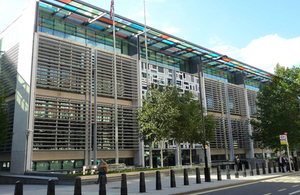Independent review of terms and conditions for operational staff in the fire and rescue service: introductory statement
Introductory statement by Adrian Thomas, appointed as the independent reviewer of the conditions of service for operational staff in the fire and rescue service.

I am delighted to have been appointed to take on the role as the independent reviewer for the conditions of service of fire and rescue staff in England. To be involved in such a great and well respected institution is a privilege and I anticipate meeting as many firefighters and others that work in the fire and rescue authorities as possible in the course of the review.
Change and transformation in firefighting is something which has continued since its inception, and it has evolved to best support the order of the day. The modern day fire and rescue authorities are the product of many years of development and improvements. The first organised firefighting originated in Britain during the Roman invasion after AD43, and we can be proud to say we have had firefighting in the UK for almost 2000 years.
During the Middle Ages however, many towns and buildings simply burned down due to ineffective firefighting arrangements. Something needed to change. The catalyst was the Great Fire of London in 1666, and almost the whole of London lay smouldering in its aftermath.
The Great Fire had the effective of forcing change and helped to standardise urban firefighting. Never again would the fire service wait for devastation, but would adapt, plan and change in order to prevent catastrophe. That core mission of saving lives and preventing fires has never changed, but the way in which the service manages it has. Firefighters and the public want the service to be best equipped and managed in order to mitigate these risks. And this taken many guises in the fire service’s history.
As is often the case, the next big catalyst for change was technology. In the 1850s the first reliable steam powered appliances were adopted by brigades which allowed a much greater quantity of water to be directed onto a fire. These were subsequently replaced by the introduction of the internal combustion engine in the early 1900s.
In the UK firefighting came from volunteer brigades, town fire brigades, or private insurance companies, and it wasn’t until 1938 that many of these were amalgamated. Before 1938 there were between 1400 and 1500 small municipal fire brigades run by local councils in the UK. All local brigades and auxiliary fire service units in the UK were merged into the National Fire Service in 1941. The formation on the National Fire Service would ensure uniformity in much of the basic equipment used by the country’s Fire Brigades during what was the busiest time ever in their history, the Second World War.
Following the end of the war the National Fire Service was taken over by local county authorities. The Fire Services Act (1947) became effective on the 1st of April 1948; this resulted in 148 county council and county borough run fire brigades.
Change has therefore been at the heart of the fire service in the UK, and it has consistently stepped up to meet this head on to improve, for the benefit of all involved.
Since 1948 the fire service has adapted to external and internal variables. Change in technology, society, organisation, and even types of fires have all had their impact. What I want to achieve from this review is to ensure that fire and rescue authorities are best placed to meet the challenges of the 21st century. And that involves setting the best possible conditions of service for staff. They are what make the fire service what it is, and I am going to do my best to ensure that they, the public and the state continues to receive the highest quality of service.
I look forward to this review immensely and hope to do the fire service’s rich history proud.